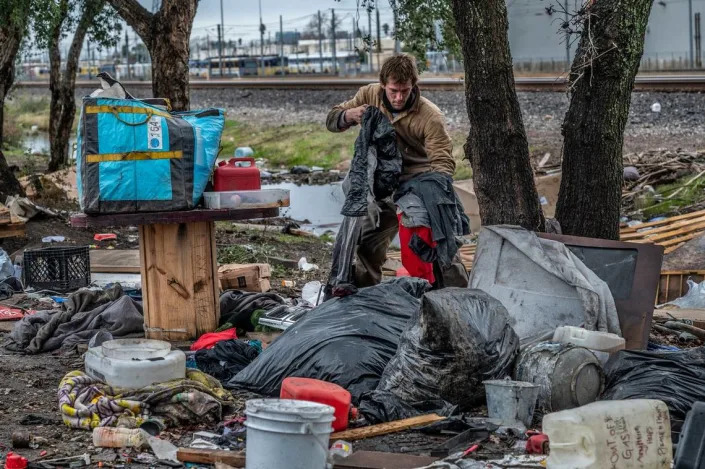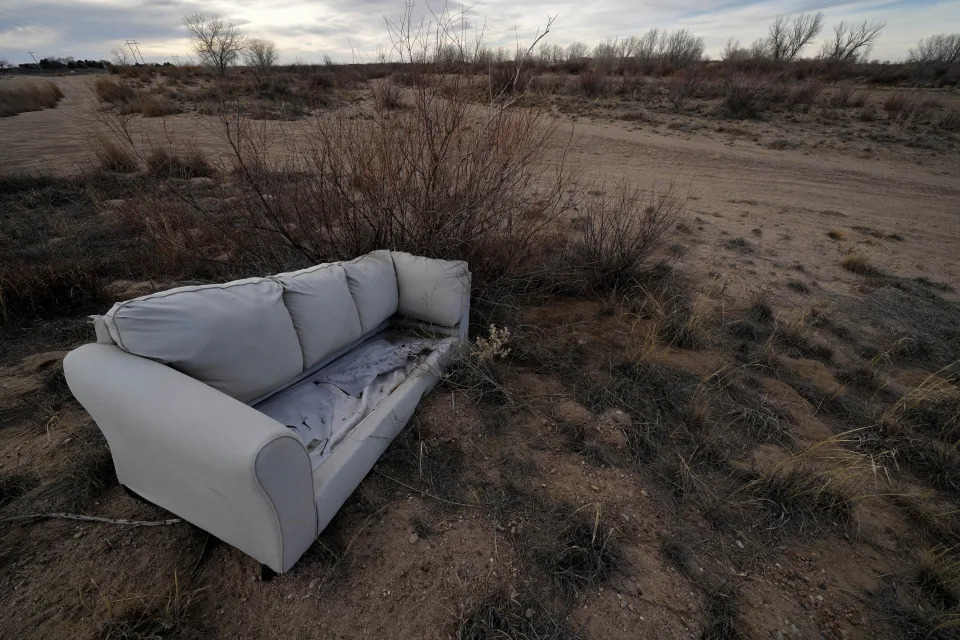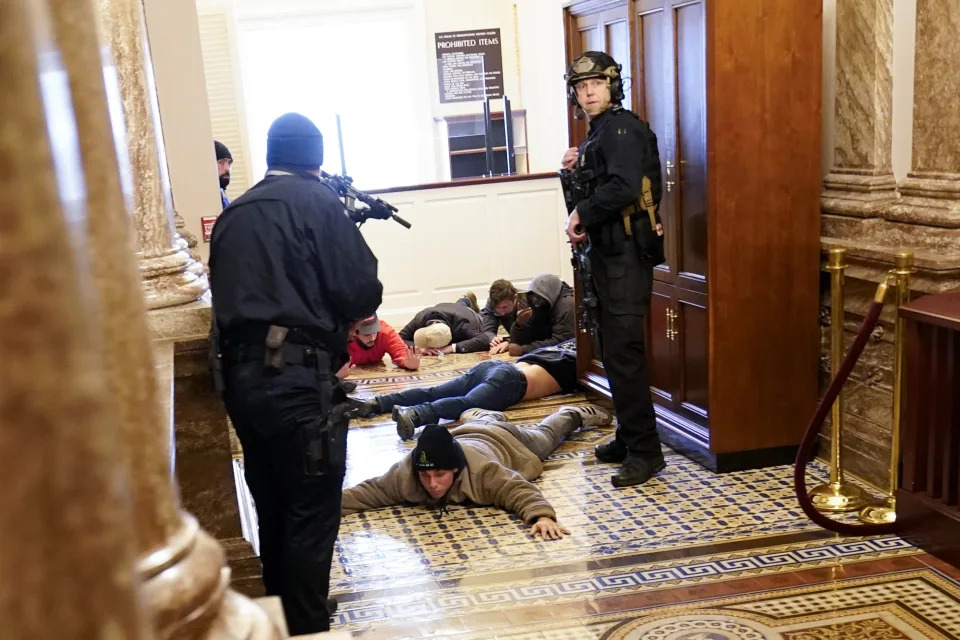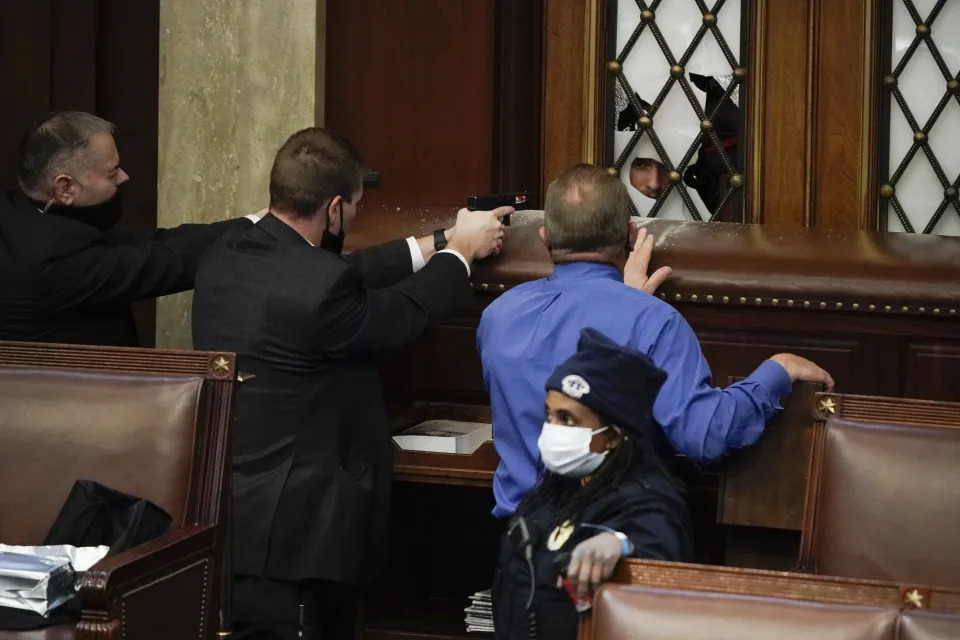The Sacramento Bee – Opinion
I’m homeless in California. And I have an easy, cost-free solution to homelessness | Opinion
Lydia Blumberg – January 8, 2023

I and my fellow residents of Wood Street Commons, an unhoused community in Oakland, believe politicians pushing sweeps of homeless encampments are only making things worse.
One thing that would dramatically improve the lives of unhoused people in California could be done today, wouldn’t cost taxpayers any money and would require no effort by politicians or city workers. It’s as simple as a governor or mayor uttering three words: Stop sweeps now.
Each time a homeless camp is dismantled, people’s lives are destroyed. All the effort we put into creating a home — we do not actually consider ourselves homeless because our camp is our home — is wiped away. Our worldly possessions, including identification, medical records, family heirlooms, clothing, electronics, furniture, instruments, bedding, tents, tools and other items that we use to earn income, are literally thrown into garbage trucks. Our handmade shelters are smashed by giant machines as we watch.
Opinion
How is this acceptable? How can the people who order and carry out sweeps live with themselves?
Each time a homeless camp is dismantled, its residents face more obstacles to overcoming what put them on the street in the first place. We create camps as a way to create stability, cultivate community, and accrue needed resources to pull ourselves up by our own bootstraps. Destroying camps pushes us down and forces us to start over, with nowhere to go and often with nothing but the clothes on our backs.
Any politician who pledges to end homelessness in one breath and then pledges to rid the streets of encampments in the next — looking at you, Gov. Gavin Newsom — is completely out of his mind.
The billions spent “helping” the homeless are profoundly undermined by the daily aggression of sweeps, which many unhoused people experience several times a year. Take it from us, the real experts on this issue: Sweeps make homelessness more entrenched.
Sweeps are also an enormous waste of taxpayer money. A 2021 sweep in Los Angeles’ Echo Park, where which roughly 200 people were removed in a violent show of police force, cost an estimated $2 million. That’s nearly $10,000 per person! These are people whose lives were destroyed at an expense that could have housed them for months.
Yet city leaders declared the Echo Park sweep a rousing success, claiming nearly everyone from the camp was placed in temporary housing. But UCLA studies conducted a year later found that only a dozen or so of them remained in temporary housing. Of the rest, four were placed in permanent housing; seven died; and most returned to the streets.
Large cities routinely sweep one or more camps per day, meaning this cruelty is repeated thousands of times each year across the state and country. Sweeps don’t get rid of camps; they just move them around, causing chaos and wasting millions in the process.
A growing body of research illustrates why we should not only keep camps intact; we should actually encourage and celebrate them. That may sound crazy to many readers, but it couldn’t be more logical.
First, the idea that camps equal crime is a myth that has been dispelled. Researchers have in fact found that clearing homeless camps is associated with an increase in overdoses, hospitalizations and mortality.
In a review of research on the topic, the U.S. Department of Housing and Urban Development noted that emergency shelters are unavailable, inaccessible or inhospitable to many unhoused people.
“Encampments may be the best alternative among a limited set of options,” the HUD report said.
It’s important to consider why people choose camps over other alternatives. Most temporary shelter facilities, and many of the permanent housing options designed to house the unhoused, come with a long list of rules that make them a little too much like prison. Among the most common rules are those limiting guests, spouses, pets, cooking, decorations and more possessions than can fit in a suitcase.
Tiny homes and sheds — the latest trends — are often placed like barracks on asphalt lots, surrounded by barbed wire and staffed by rude security guards. Would you give up your freedom to move to one of these places?
Humans need more than food, water and shelter. Autonomy and a sense of belonging are equally important to survival — and are actually the keys to recovery for people who have had a hard time in life. The impersonal facilities that we’re asked to move into are not designed with this in mind.
But autonomy and belonging are the essence of what camps are about. We camp together because it is essential to our physical and mental survival.
Our community on Wood Street in Oakland has recently been subjected to devastating sweeps. Caltrans has cleared an enormous section of the camp.
But the part that remains is stronger than ever. We cook for each other, distribute clothing and bedding, build our own tiny homes, play music, help each other heal, and host cultural events that have been attended by hundreds of housed residents. We see ourselves as part of a movement redefining the identity of American cities for the better: an identity based on an ethos of interdependence rather than the cult of independence that defines the world of the housed.
The last bit of land that we occupy on Wood Street is slated for clearance on Monday. We’ve been trying to work with Oakland officials to find a place where we can set up a new community and begin to rebuild yet again, but they refuse to cooperate. The city loves to tell us where we can’t be but has yet to tell us where we can be.
We do not accept this, which is why we’re taking matters into our own hands. We recently rode our bikes to the Capitol in Sacramento to speak with lawmakers there, and we will continue to press the case at City Hall. We will not be denied the essential human right to exist and exert our free will.
This piece was authored by Lydia Blumberg and other residents of Wood Street Commons, a settlement of unconventionally housed residents in West Oakland founded on the idea of “homeless helping the homeless.”
















